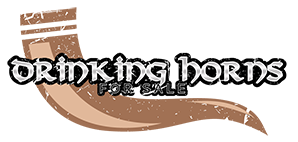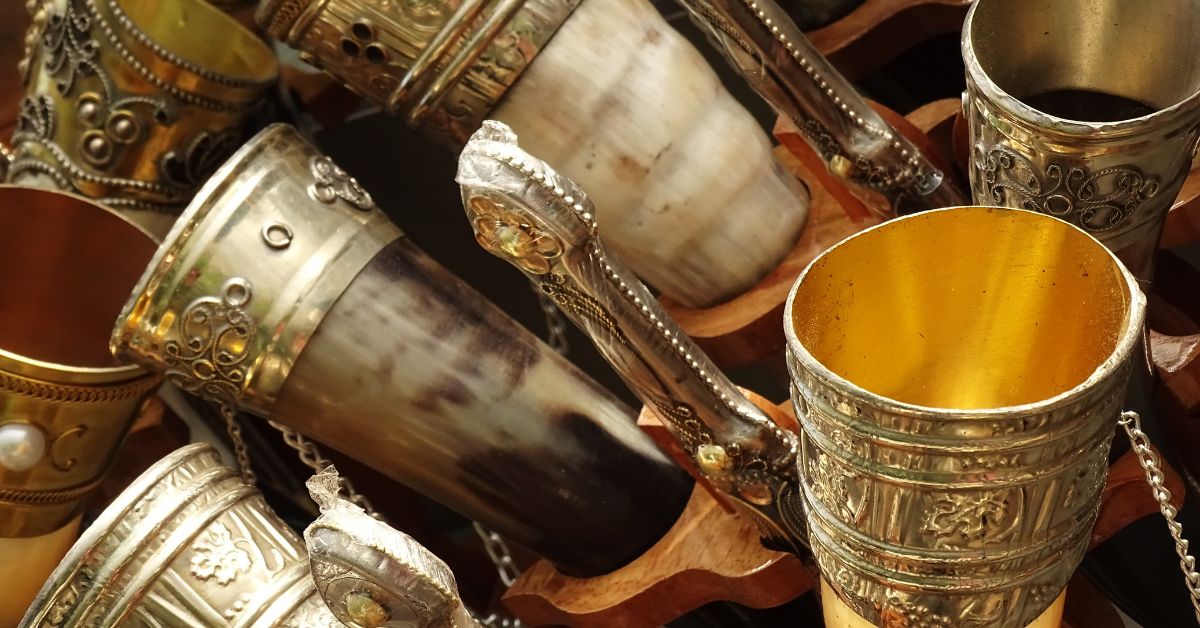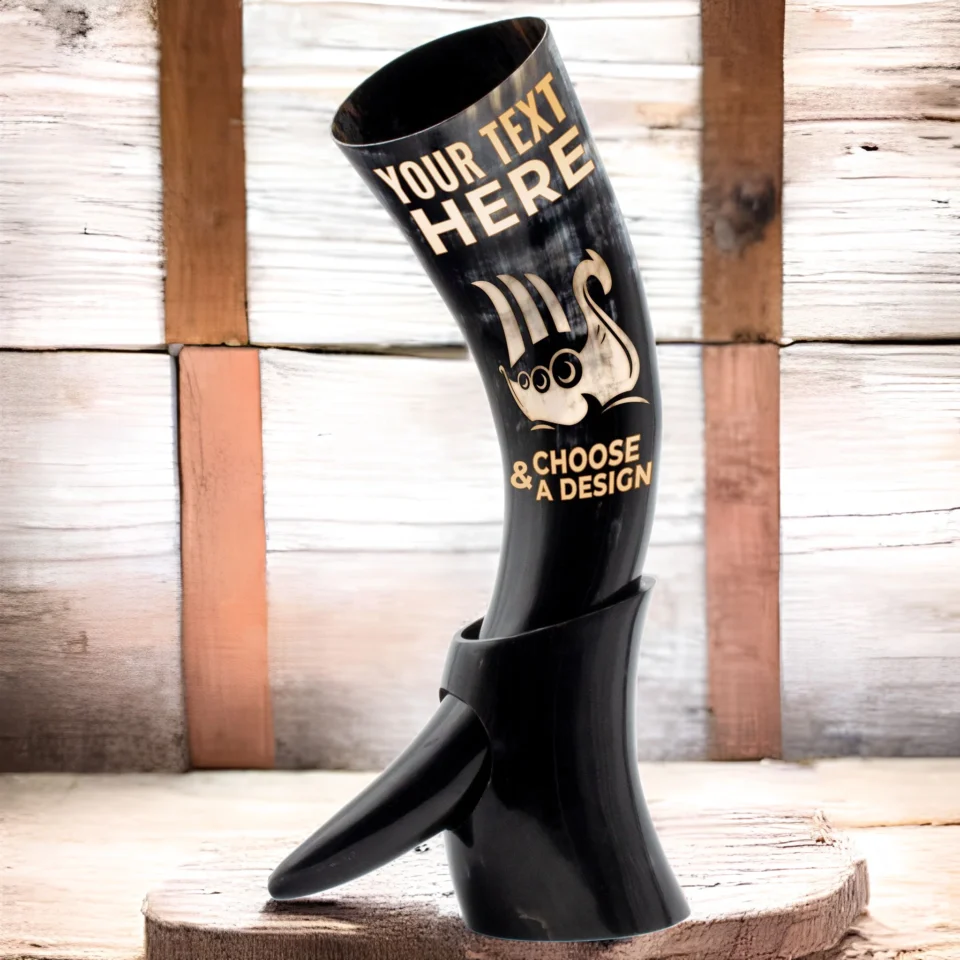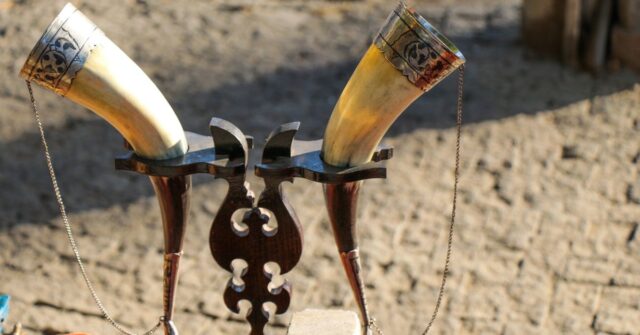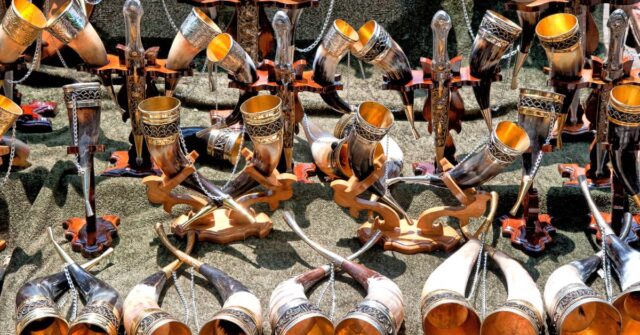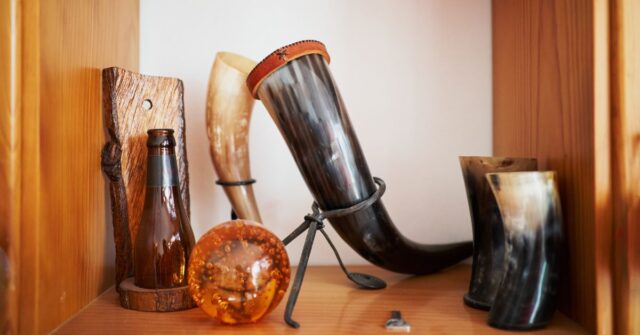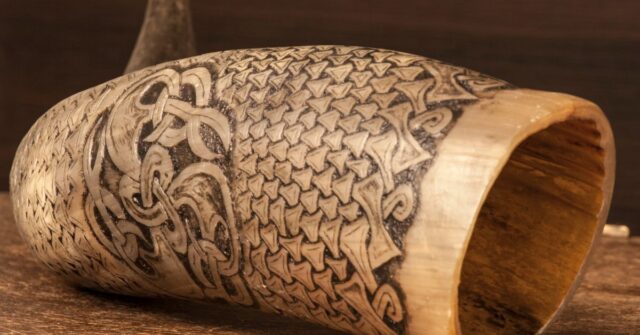Delve into the fascinating journey of drinking horns and the intricate craft of goldsmithing, which have both played pivotal roles in cultural ceremonies and everyday life through various ages and civilizations.
Introduction to Historical Drinking Vessels
Drinking vessels, particularly drinking horns, are not just artifacts; they are symbols of power, tradition, and artistry.
Historically, these items have served both functional and decorative purposes across multiple societies.
Overview of Drinking Horns
Originating from the hollowed horns of bovine animals, drinking horns were initially used by ancient tribes in Europe, Asia, and Africa.
The use of these horns dates back to the Neolithic period, and they have been found in a variety of sizes and shapes, each reflecting the culture and epoch it originated from.
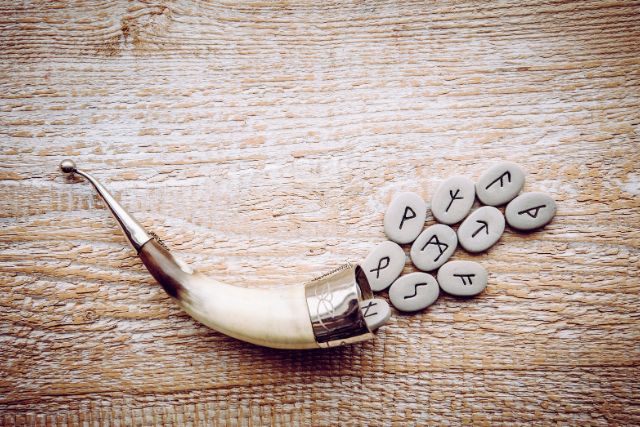
Significance in Various Cultures
In Norse mythology, drinking horns were often associated with the gods, imbuing them with substantial cultural importance.
Similarly, in medieval Europe, they were a staple at banquets, often intricately carved and adorned with precious metals and gems to reflect the status of the bearer.
The Origin and Evolution of Drinking Horns
The history of drinking horns spans thousands of years, with each era bringing its own innovations and styles to this quintessential object.
Early Uses and Cultural Significance
Initially, drinking horns served as practical drinking vessels for nomadic tribes. Over time, they became ceremonial pieces, used in sacred rituals and oaths, signifying honor and communal bonds.
Materials and Methods in Ancient Times
The earliest horns were simple and functional, but as metalworking skills progressed, they began to feature decorative metal tips and elaborate engravings.
Geographical Spread and Variations
While Viking and Celtic cultures are most renowned for their use of drinking horns, variations of these can also be seen in Persian and Roman cultures, each adapting the basic form to local aesthetic and functional preferences.
Goldsmithing Techniques and Drinking Horns
The art of goldsmithing has greatly influenced the development and decoration of drinking horns, especially during the peak of their use in medieval times.
Basic Principles of Goldsmithing
Goldsmithing involves the crafting of items from gold and other precious metals. Techniques such as forging, soldering, and embossing were commonly used to enhance the beauty of drinking horns.
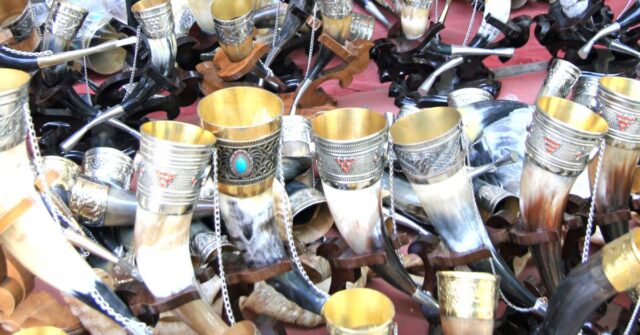
Decorative Techniques Applied to Drinking Horns
Gold and silver plating were common, as were inlaid gems and intricate filigree work, which turned these vessels into luxurious symbols of wealth and power.
Famous Historical Examples
One notable example is the Sutton Hoo horn, part of a significant Anglo-Saxon burial find. These artifacts highlight the exemplary craftsmanship and artistic skills of the goldsmiths of that era.
Craftsmanship in Different Eras
The craftsmanship of drinking horns evolved distinctly in various historical periods.
The Viking Age: Style and Substance
The Vikings are often credited with creating some of the most iconic drinking horns, typically adorned with Norse art and symbols, reflecting their robust aesthetic and cultural values.
The Medieval Period: Function and Ornamentation
In the medieval era, drinking horns became more elaborate, often used as regal presents and included in royal treasuries. Their designs during this period show a marked increase in complexity and opulence.
Renaissance Influences on Metalwork
The Renaissance brought about a renewed interest in classical art and symmetry, which was reflected in the designs of drinking horns, incorporating Renaissance artistic principles into their ornamentation.
The Art and Science of Metalworking
Metalworking is both an art and a science, involving a deep understanding of materials and techniques to create both functional and decorative items.
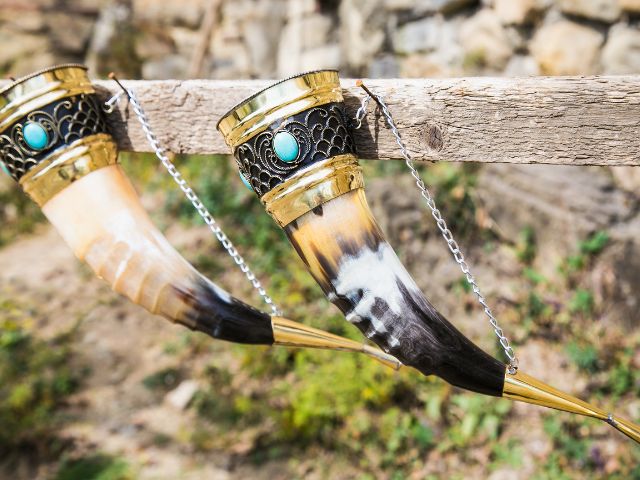
Tools and Techniques Through the Ages
From simple hammering and annealing to more sophisticated methods like lost-wax casting, metalworkers have expanded their techniques to create more intricate and delicate designs over time.
Innovations in Metalworking and Their Impact on Drinking Horns
Innovations in metalworking, particularly in the ability to work with harder metals and more precise tools, allowed craftsmen to create increasingly detailed and refined drinking horns.
Cultural Significance of Decorated Drinking Horns
The cultural impact of decorated drinking horns is immense, symbolizing authority and prestige in many societies.
Symbolism and Usage in Ceremonies and Daily Life
Drinking horns have held a prominent place in rituals and ceremonies, often used to bind agreements and celebrate victories.
Role in Mythology and Legend
In mythology, drinking horns are often depicted as mystical objects, imbued with powers and linked to the divine, illustrating their importance beyond mere utility.
Preservation and Restoration of Historical Artefacts
Preserving ancient artifacts like drinking horns presents unique challenges, particularly in balancing preservation with restoration.
Challenges in Preserving Metal and Horn Materials
Metal and horn materials deteriorate at different rates and require specialized conservation methods to ensure their longevity.
Modern Techniques in Restoration
Advances in preservation technology now allow conservators to restore these historical pieces more effectively, ensuring they survive for future generations to study and appreciate.
Drinking Horns in Modern Times
Despite their ancient origins, drinking horns have seen a resurgence in popularity in modern times, often used in historical reenactments and as decorative items.

Revival and Contemporary Uses
Today, drinking horns are crafted for both traditional uses and as novelties, celebrated for their historical significance and artisanal value.
Collecting and the Antiques Market
Collectors and historians alike treasure ancient drinking horns, often fetching high prices at auctions and serving as prized possessions in private collections.
Conclusion: The Legacy of Drinking Horns and Goldsmithing
The enduring legacy of drinking horns and the art of goldsmithing continues to captivate and inspire, reflecting the ingenuity and creativity of our ancestors.
Lessons from History and Their Modern Relevance
Studying these historical objects teaches us about the technical and artistic achievements of past cultures and their relevance to contemporary artistic endeavors.
Future Trends in Preservation and Revival
As we advance in our ability to preserve and interpret the past, the lessons learned from drinking horns and goldsmithing will undoubtedly influence future artistic and cultural projects.
